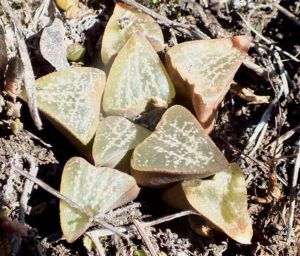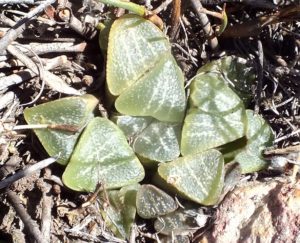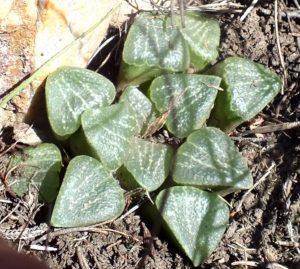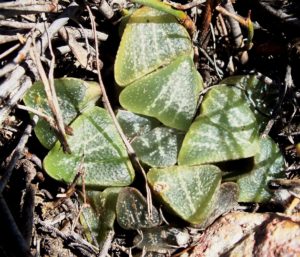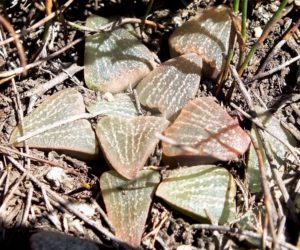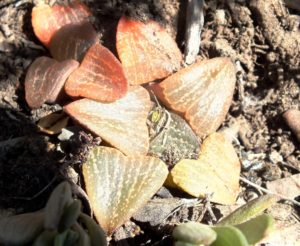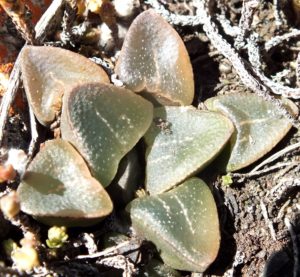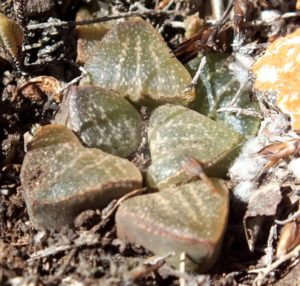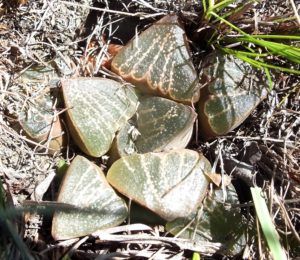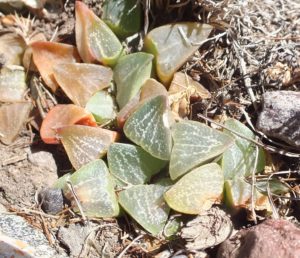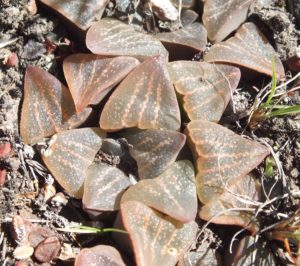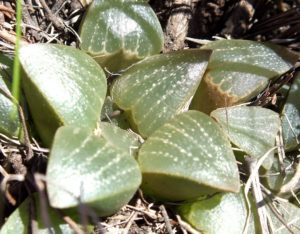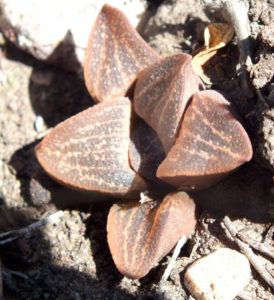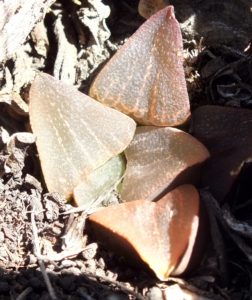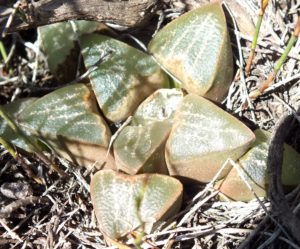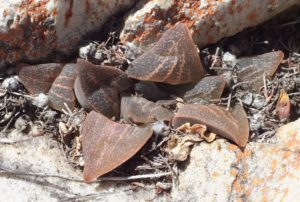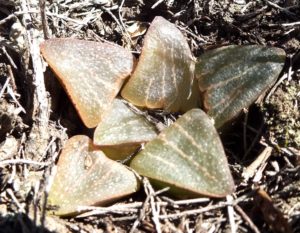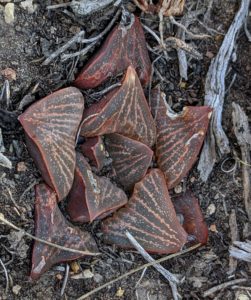A review of the plants photographed recently around Albertinia … I only know of 23 populations in this area that relate in different ways to the names Haworthia turgida, H. retusa, H. mirabilis, H.emelyae, H. pygmaea, H. splendens, H. vincentii, H. acuminata, H. fusca, H. dekenahii, H. argenteo-maculosa, H. pygmaea, and H. esterhuizenii. I still need to get pictures of H. splendens, H. vincentii, and H. turgida on the Wydersriver.
In essence there are two variants – the clumping cliff dwellers (H. turgida) and the mostly solitary flats dwellers (H. retusa). The flat dwellers are far more variable than the cliff dwellers. If all the variation is considered against the differences in each of the habitats, it seems very unreasonable to suggest that these populations are anything but a single species (H. retusa) expressing itself differently according to local dictates and demands. This is same issue of variability occurs in these plants all the way westwards.
97. 2020.03.04 – Esterhuizenii – Aasvoelberg. I was concerned that I am not sure anymore of flowering time because essentially retusa and mirabilis are separated by a late summer vs a spring flowering. None of the populations I saw now in late February showed any sign of buds or flower. Only the Humor plants had just two old inflorescence of about two months age. The fact it is a SYSTEM. The retusa elements are lighter coloured signified by having an element “pallidifolia”, while the mirabilis element has the element “nigra”. Recognising species as systems, variation and differences can be seen in a more realistic way. This does help to overcome the pressures that ignorance, egocentrism, emotion, commercialism and intellectualism bring to bear on classification. H. retusa ‘esterhuizenii’?
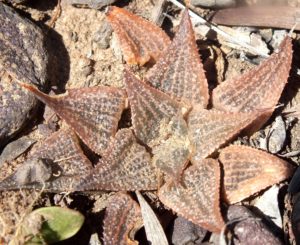
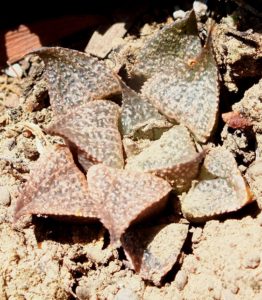
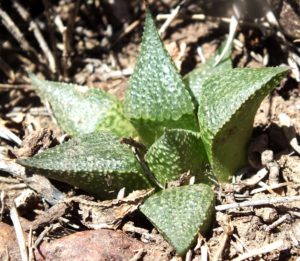
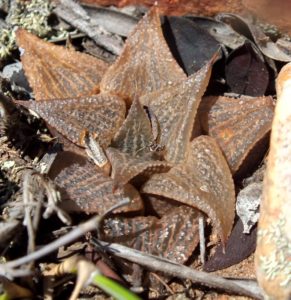
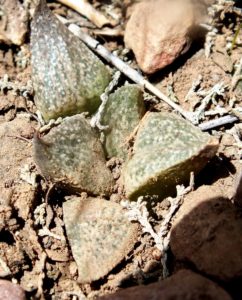
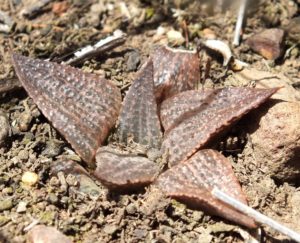
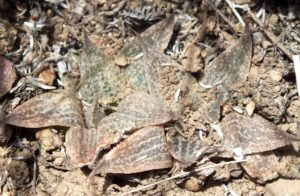

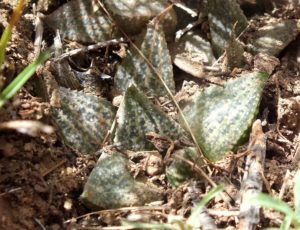
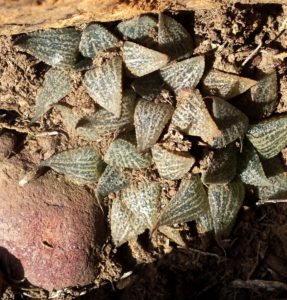
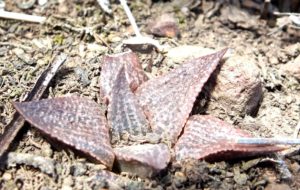
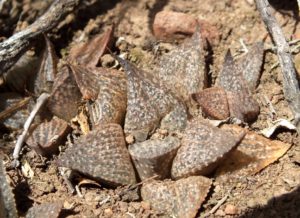

The map is useful although it does raise the question of how confidential should we be about locality. Part of this quest was to examine how populations have fared in the years since “discovery” and also in the 50 years since I have been directly involved. My observation is that the main threat is excessive animal pressure – and/or combined with drought. The Aasvoelberg population seems to be very small and a secondary threat is alien weed infestation. But I really do not know the actual size and health of the population. I did see plants further west long ago, but it will be a real mission to explore there properly. An important point about conservation is that it is really only as systems that species can cope with natural and even man-imposed change. It is only with a proper and true definition of the term “species” that we can even discuss them sensibly. “Adaptive” must surely be part of that?
98. 2020.03.05 – This is H. retusa (turgida) at Buisplaas on the Gouritz River between the Gouritz Bridge and Herbertsdale. This form was informally known as H. rodinii and is known from the Gouritz Bridge and also south of that. As a cliff dweller it is normally clumping. The first time I saw such a plant it was a specimen reputed to have come from Die Hell much further north in the Swartberg Mts. VERY unlikely, but H. retusa should be sought in the Gouritspoort where the river passes through the Langeberg Mts. There are many populations of these cliff dwellers and countless variants. I do not and cannot, dispute the fact that names present a problem for suppliers and collectors, but that is not a problem that can be settled by science. Association of a botanical binomial and place is the only solution that makes sense to me. Taking out the geographical detail diminishes the sense of any name. But this series is to explain and expand on this issue.
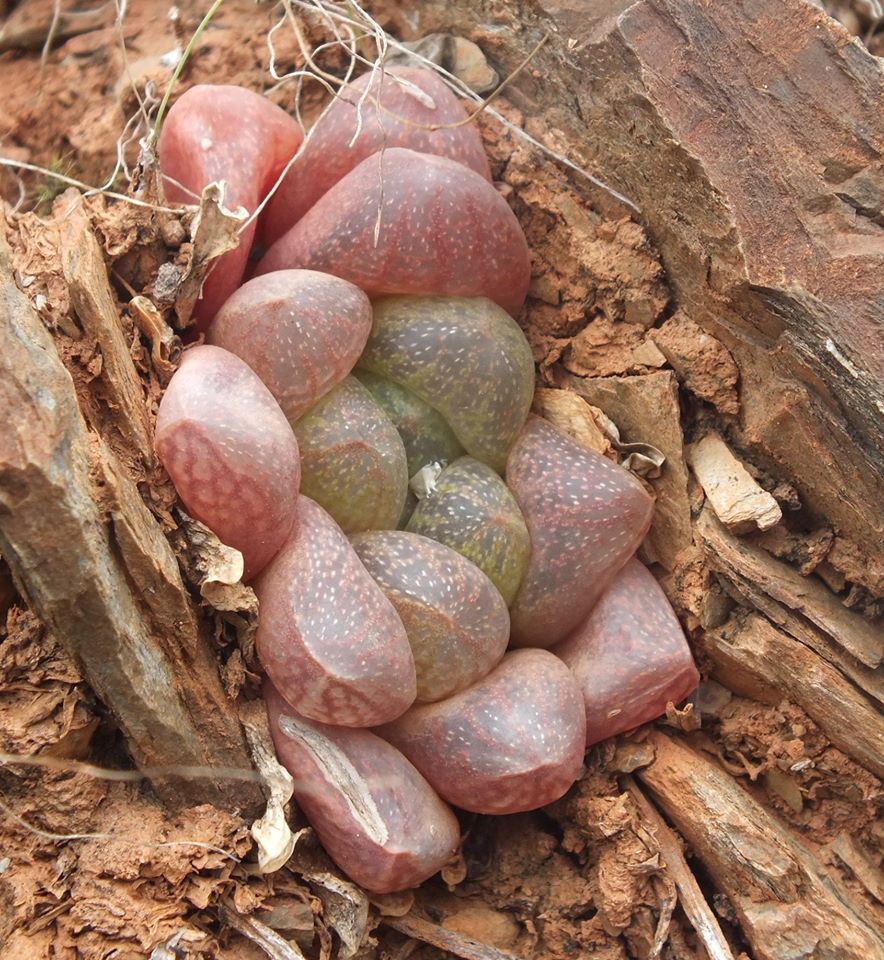
These are also Buisplaas but in a totally different habitat several hundred meters from the cliff dweller. One picture shows a very proliferous clone. This same juxtaposition of clumping and non-clumping occurs elsewhere and is a pronounced feature of the H. cooperi and H. cymbiformis problem in the Eastern Cape. These Buisplaas populations validate my conviction that the Western cape retusoids are in fact a single species system. There has been a predictive element in all my exploration since the revision of 1999 Haworthia Revisited and this population simply fits a pattern. Comparing all the pictures of this series I am now showing will demonstrate this too. H. retusa ‘pygmaea’. I write the name like this because in the absence of a species definition, formal lower ranks have to be meaningless. Furthermore the nature of local variation is such that it is generally impossible to circumscribe ranks. A very good example of this is the persistent reference to H. mirabilis var. magnifica which can absolutely not be supported on the basis of a type specimen representing an original group of such similar or like plants.
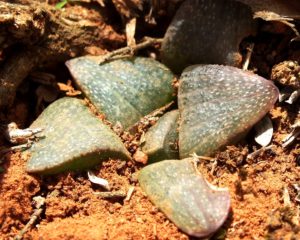
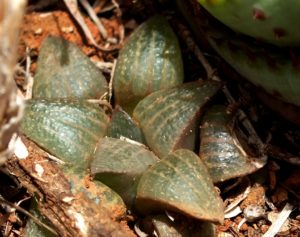
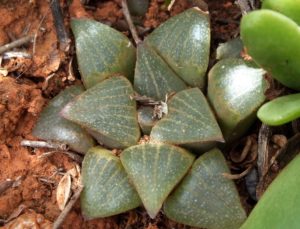
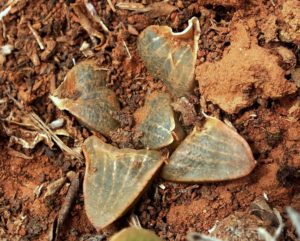
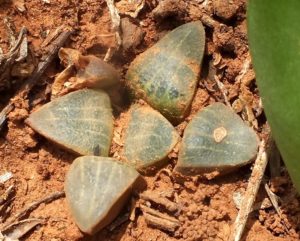
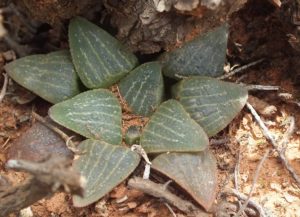
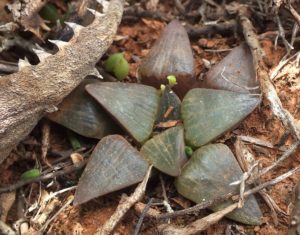
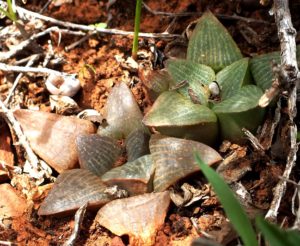
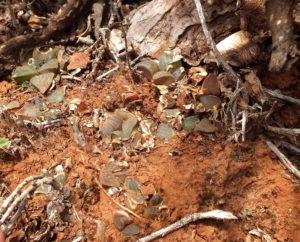
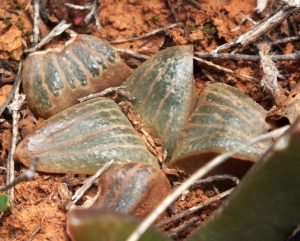
99. 2020.03.07 – Despite the drought and animal activity (and human predation presumably) – the Cooper Siding plants are in great health. I am posting all my pictures (of Haworthia – there are many other plant species of significance present) because the reality of diversity within populations gets zero attention in citizen science and little more in academia. But do not get me wrong. I write “citizen science” not citizen cognition. Also I do not ignore the fact that “citizen science” also features in academia. These plants (a plant?) was described as H. dekenahii var. argenteo-maculosa. In my Handbooks 1976, 1981), I placed the two under H. retusa. Was this wrong? No – because moving them to H. pygmaea as I did in my revision (1999) highlights the reality that this is a single system and not just spatially isolated populations that can be treated as different.

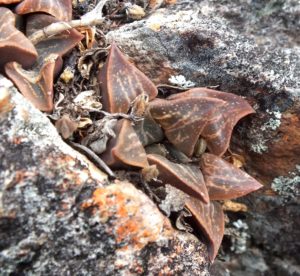
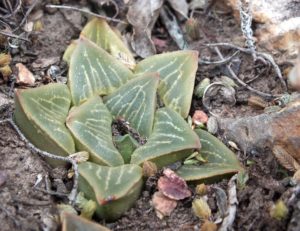
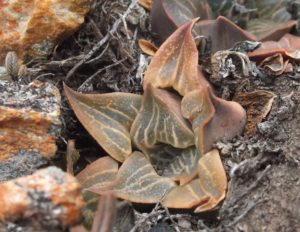
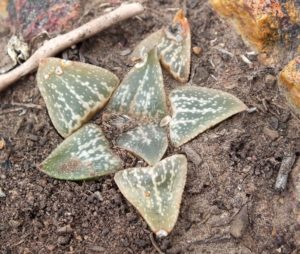

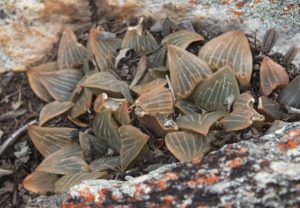
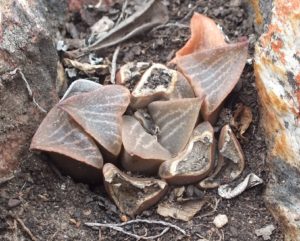

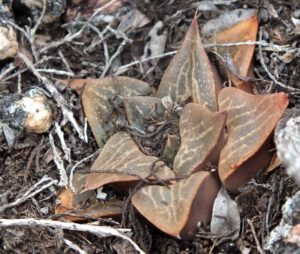
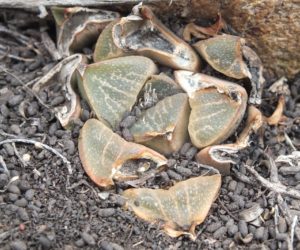
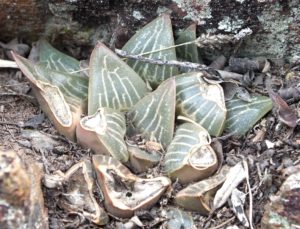
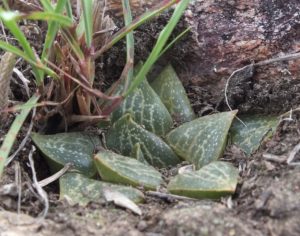
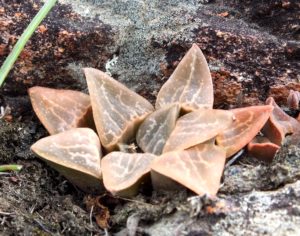
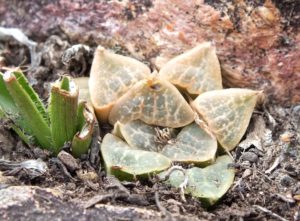

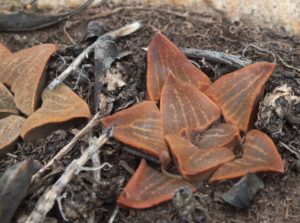
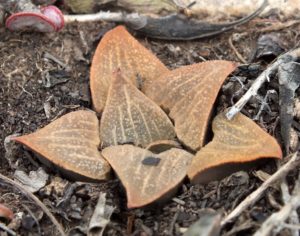
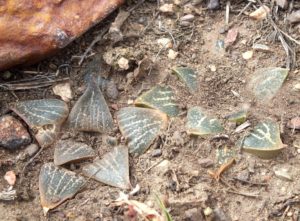

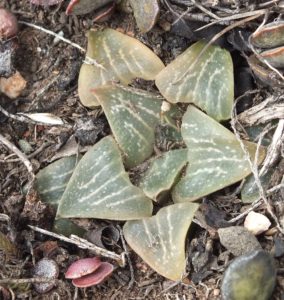
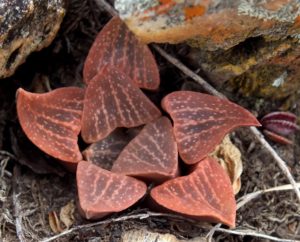
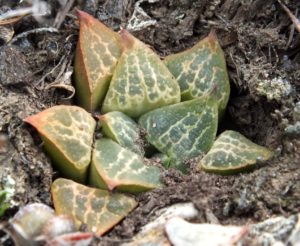
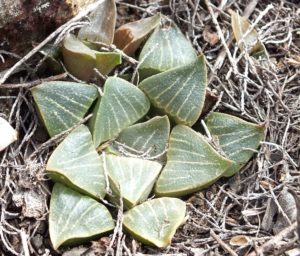
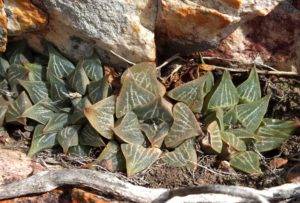
In writing about Albertinia and the conservation state of these Haworthia populations (that really bothers me), some very serious thoughts come to mind. Do we really want to know the problem and the answer(s)? The problem is environmental deterioration – climate change. This is coupled with the decline in moral values across the counter. But do we want to acknowledge this and really want to know what is true. That all of existence is actually a grand illusion that we may choose to be locked in to. I should not have suggested that climate change is the main factor – although Albertinia has been experiencing the worst drought in living memory. Livestock pressure also definitely impacts negatively on vegetation, and our dietary addictions prevent us recognizing this fact.
100. 2020 03.08 – Dekenahii is at Draaihoek on the Valse River northeast of Albertinia. Juxtaposed again on a nearby rocky cliff is “turgida pallidifolia”. A floribunda / chlorocantha variant is in close proximity in its own preferred space. A different form of the turgida retusoid used to be on north facing cliffs a little further north at Weltevrede. Keep in mind that I am considering a bigger picture in which differences within populations negate differences between them, and especially when habitat is considered. I also juggled dekenahii between retusa and pygmaea and whatever you do with it, the best explanation I can offer as a binomial is H. retusa ‘pygmaea’. Better still is to add the unwritten meaning that it is actually Helgaard Oosthuizen’s discovery of H. retusa as a group of plants at Draaihoek circa 1943 given to Smith by Dekenahii. Names standing alone may be good for business but the interest lies in the information attached to them and which they point to.
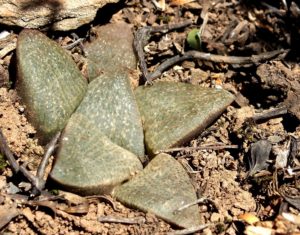
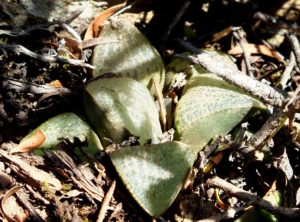
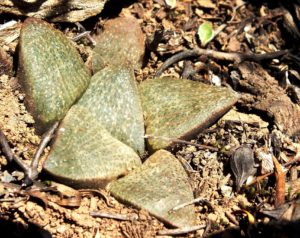

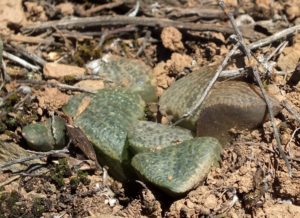
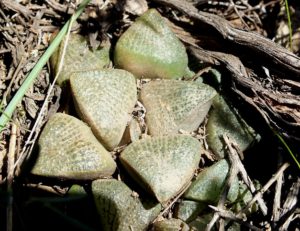
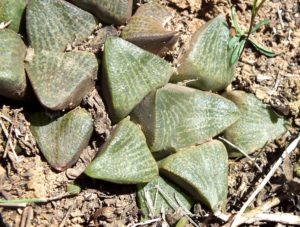
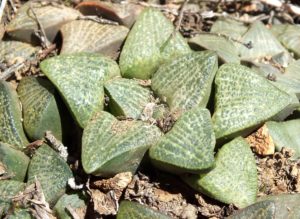
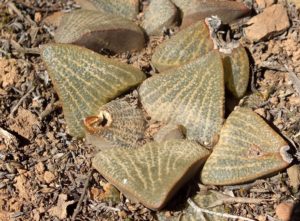

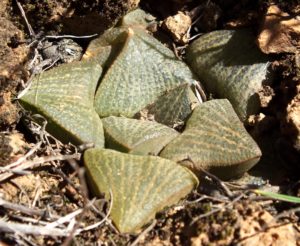
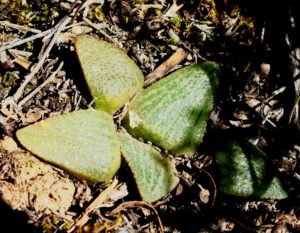
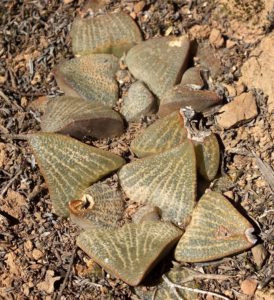
This is the “turgida” form of H. retusa at Draaihoek. These plants have more pointed leaves and are more colourful than the “pallidifolia” that I remember 59 years back. But the precise locality may have been different. I remember plants more like those at Tweekuile further east along the river that I will still post pictures of. At Weltevrede further upstream the plants had longer leaves. Steven Molteno coincidentally reminded me of H. marumiana and the exact same conundrum I am trying to explain here, but magnified manifold over the vastness of the Karoo and our ignorance of both marumiana and the Karoo.
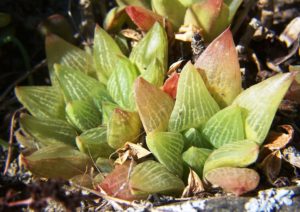
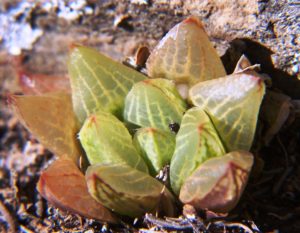
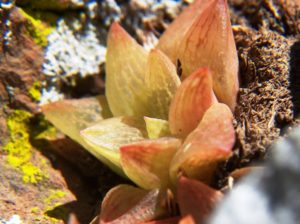
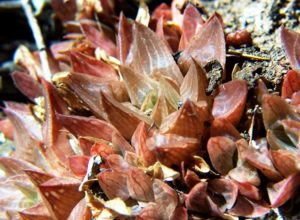
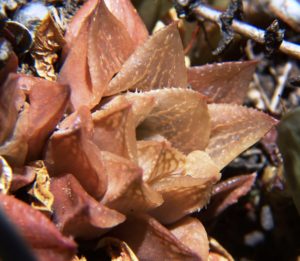
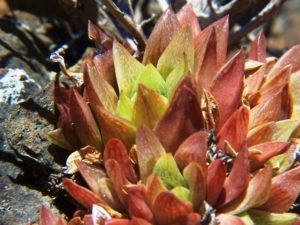
101. 2020.03.10 – Tweekuile is north of Albertinia and just a few km east of Draaihoek on the Valse River. This is what H. retusa ‘turgida’ looks like there. It occurs to me that sensible taxonomy, like prevention and cure of disease, is not a sustainable business model 😅
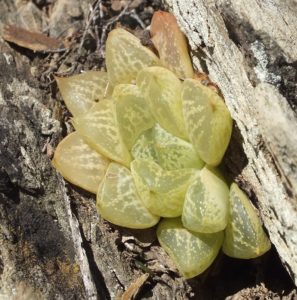
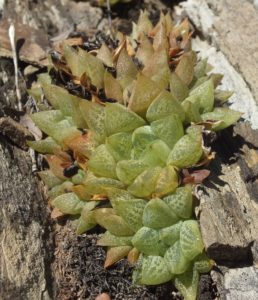
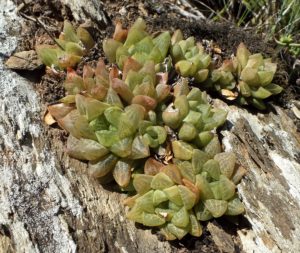
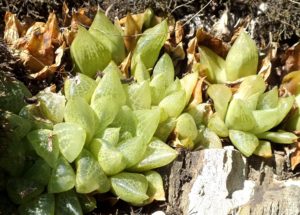

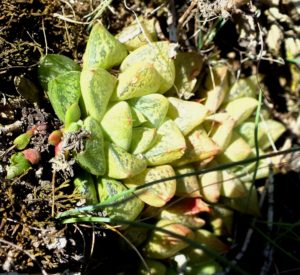
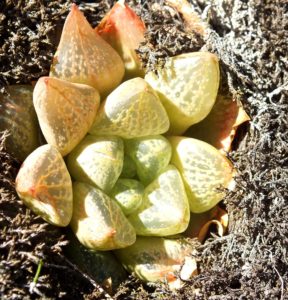
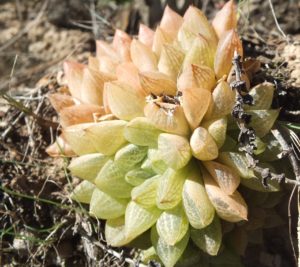
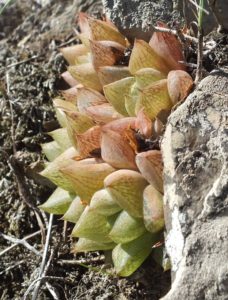
Without any simple and practical measure, how does one deal with an endless array of slightly different looking things affected by age, exposure to direct sun and an also seemingly endless lot of agencies affecting appearance. Compare these two Cooper Siding and Humor pygmeas with the Tweekuile turgidas.

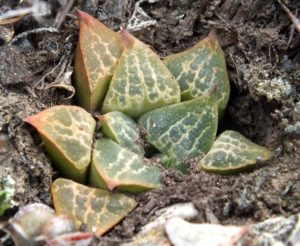
102. 2020.03.11 – Have a good look at the rest of Humor. I suppose it is still fashionable to dismiss variation like this as “hybrid swarm”. Problem here is what parents where and when. To be strictly correct, is there really any option but to say H. retusa ‘pygmaea’? ♦
